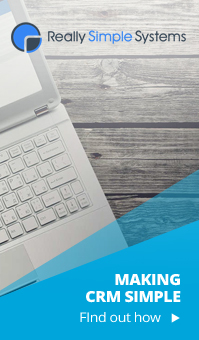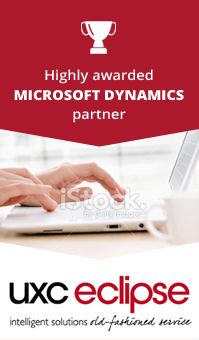
What is CRM?
Customer Relationship Management (CRM)
Bill Gates States in his book 'Business @ the Speed of Thought', 'only a few businesses will succeed by having the lowest price, so most will need a strategy that includes customer service... customer service will become the primary value-added function in every business'. He, among the world's leading IT companies and consultancies acknowledge the power CRM provides commerce - it is fast becoming a key business differentiator.
Winning new business is becoming an increasingly expensive proposition; organisations have come to understand that differentiation on product alone is often not enough to win or retain market share. Therefore, organisations need to focus on customer relationships and service when seeking to improve their competitive position or trying to save costs.
The key issues are:
- Sales - reliable and consistent communication
- Customer Service - creating and retaining satisfied, loyal customers
Why focus on Customer Service?
Focusing on customer service has been proven to be an effective strategy for competitive differentiation. The main goal must be to increase customer satisfaction levels and thus create customer loyalty. Loyal customers buy more products and services, they accept premium prices and they help to promote the brand by praising the services they receive. All these factors increase revenue and profitability.
To truly satisfy customers, an organisation must understand its customers well and must be easy to do business with. To meet this requirement, two basics are required: -
Accurate and comprehensive customer records in a well-structured and maintained database
Easy access to information, products and services using in-bound message technology and refined customer self service facilities.
The Importance of the Customer Database
It is vital that customer records are unique for a customer and all interactions with a particular customer must become associated with the initial master record. If a customer buys repeatedly (and this is exactly what we want) we must not create a separate customer record but rather add to the existing information. This is far easier said than done, particularly if we wish to retain the relationships that a customer "entity" may possess - for example, associated companies, business associates, family etc. If a customer has difficulties with one product we are in a better position to assist if we know more about the circumstances. At the same time any risk or opportunity of the business can be better determined.
Critical success factors for the design of a customer information system include: -
- Fast, reliable and secure identification of customers.
- Comprehensive access to information like history and products & services used.
- Easy maintenance, perhaps performed automatically as service is provided.
The success of CRM is completely dependent upon a good customer information system, database and access systems.
Communicating with Customers. Do you know ALL the options?
Customers typically have contact with an organisation on a number of occasions:
- Outbound
Messages (eg.
marketing and telesales calls initiated by the organisation) – facilitated by Call
Centre Systems
- Sales (eg. contact management, lead tracking, sales forecasting, product and service documentation, configuration management, remote order entry) – facilitated by Sales Force Automation Systems
- Inbound Messages when post-sales assistance or information is required – facilitated by Help Desk / Service Call Centre Systems
- Customer Self Service (eg. on-line shopping, on-line banking, service requests, account status reviews, querying supplier price lists) – integrated front and back office systems enable E-Commerce using say the Internet as the medium.
It is important that consistent information is provided across all these communication channels. This requires that customer records, product and services descriptions are maintained in a single set of master records. Information gathered via out-sourcing (marketing, product support, etc) should only be imported selectively via specific filters.
Marketing (outbound messages)
Marketing encyclopaedias, campaigns, events, customer surveys and other feedback can be used very effectively to introduce changes to products and services. Simultaneously acceptance and interest can be measured as well as stimulated in targeted customer groups through a well-designed communication. Call centre technology is often used for this information gathering and exchange.
i. Marketing calls are initiated by an organisation to a pre-selected group of customers or prospective customers. The aim is to make a large number of calls with a controlled message or questionnaire within a short time. The campaign planning includes defining the purpose and analysis intended, target selection, script development, schedule and training of agents. All this must be supported by the call centre software application.
Sales
Depending upon the market a variety of sales methodologies typically apply. Some common sales utilities and their use for larger value customer interactions include:
i. The sales force must share reliable customer information (eg. name, phone, products in use and possibly some history or statistics). If sales staff are mobile workers and visiting customers, they need this information on their laptop PC, updated regularly through phone networking.
ii. Maintenance of sales related activity records.
iii. Analysis and reporting of sales opportunities including long term planning and forecasting.
iv. Product and service documentation and demonstration - customers often want a certain impression of what new products can do for them.
v. Configuration management - this is a very complex issue depending upon the product or service sold. A multitude of products and components, legislative restrictions, feature combinations, models and versions often requires expert advice before a product can be configured to customers' requirements
vi. Proposal preparation support - the mechanical work for preparing written proposals could be more accurate and easier if customer details, product and service description templates, pricing and forecasted delivery times were available on-line.
vii. Remote access to corporate business systems.
viii. Remote Order Entry - a more advanced feature used by a mobile sales force to allow a new contract/order to be entered directly.
Help Desks and Service Call Centres (inbound messages)
For a number of reasons customers with queries, suggestions and complaints have developed a liking for the telephone as the preferred method of contact. For many organisations the management of this unpredictable in-bound traffic is of vital importance to profitability. The application of CRM intelligence to this information stream – for example, to pre-empt many queries by pro-active customer messaging is a major task.
For a Call Centre/Help Desk to be an effective customer support facility it must be able to: -
i. Respond to incoming calls within a set time (less than 10 seconds in 90% of calls is seen as world class standard).
ii. Use advanced methods and technology to identify customers. Computerised Telephony Integration (CTI) can identify a calling line (customer) and transfer calls with call records to experts. Voice recognition may assist in verification of a caller. Interactive Voice Response Units can query PIN numbers etc. before a caller speaks to a human operator.
iii. If appropriate, advanced methods can help in identifying the customer's reason for the call and a solution to their problems such as on-line expert systems and scripted guidance for operators to ask the right questions.
iv. Have all customer records in full, readily available to the call-taking agent.
v. Create a track record as the phone support is in progress. This will help analysis and refinement of support processes and product offerings.
vi. A call centre, particularly through the appropriate training of its agents/operators, should aim to resolve 90% of issues within the one call.
vii. Implement sophisticated call analysis using data mining and other decision support utilities to identify new business opportunities and common problems for which solutions can be developed.
Customer Self Service
Increasingly customers expect to be able to help themselves, not restricted by business hours or geography. Technology is available to allow customers to get additional and more sophisticated services when dialling a customer service centre. Automatic teller machines, on-line banking and access to organisations' services via the Internet are already quite common. Other examples include:
- Online
shopping
- Querying
an order's status
- Account
status reviews
- Viewing
a supplier's price list
- Sending
and receiving software updates, proposals, quotations, orders, confirmations,
manuals and anything else that can be delivered electronically.
The volume of electronic commerce is ever increasing. Technically, none of the above listed features are difficult and most of them have been in use for a number of years in non-commercial environments. However when commercial values and payments for the on-line services are involved, a set of key issues must be resolved.
Due to the nature of electronic processing and storage, and since no human witness exists, possibilities of errors or fraud may flourish. In order to track and recover the true picture of a transaction some additional trusted information must be obtained and kept.
Date posted: 2014-12-15 | posted by: miked
Tweet



